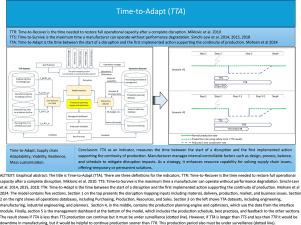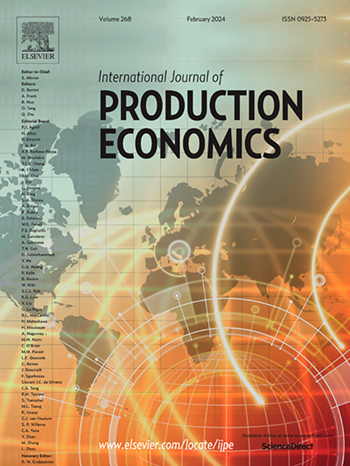Time-to-Adapt (TTA)
IF 9.8
1区 工程技术
Q1 ENGINEERING, INDUSTRIAL
引用次数: 0
Abstract
Manufacturing operations rely heavily on external sources and supply chain () networks, making them susceptible to material and operational risks. In response, manufacturers are investigating innovative strategies to enhance their adaptability and strengthen the resilience and viability of their value-creation systems. This shift has prompted an increased focus on integrating inherent adaptability while maintaining profitability and efficiency. Although indicators such as Time-to-Recover () and Time-to-Survive () are commonly employed to assess capabilities, the literature suggests that scholars and practitioners give less consideration to the internal factors of Mass Customization () manufacturers and their influence on mitigating disruptions, particularly the Time-to-Adapt () indicator in manufacturing. This study utilizes a case study approach, complemented by a mathematical model, to analyze the role of as a key internal controllable indicator within manufacturers and as an external controllable indicator for suppliers. The findings indicate that manufacturers can employ the indicator to measure the adaptation period and enhance their adaptive capabilities. Moreover, it enables manufacturers to optimize profits by selecting viable production options in response to resource shortages.

适应时间 (TTA)
制造业务严重依赖外部资源和供应链(SC)网络,因此很容易受到材料和运营风险的影响。为此,制造商正在研究创新战略,以提高其适应性,并加强其价值创造系统的复原力和可行性。这种转变促使人们更加关注在保持盈利能力和效率的同时,整合固有的适应能力。虽然通常采用恢复时间(TTR)和生存时间(TTS)等指标来评估SC能力,但文献表明,学者和从业人员较少考虑大规模定制(MC)制造商的内部因素及其对缓解SC中断的影响,特别是制造业的适应时间(TTA)指标。本研究采用案例研究法,辅以数学模型,分析了 TTA 作为 MC 制造商内部关键可控指标和供应商外部可控指标的作用。研究结果表明,制造商可以利用 TTA 指标来衡量适应期,提高适应能力。此外,它还能使制造商通过选择可行的生产方案来应对资源短缺,从而优化利润。
本文章由计算机程序翻译,如有差异,请以英文原文为准。
求助全文
约1分钟内获得全文
求助全文
来源期刊
CiteScore
21.40
自引率
7.50%
发文量
266
审稿时长
52 days
期刊介绍:
The International Journal of Production Economics focuses on the interface between engineering and management. It covers all aspects of manufacturing and process industries, as well as production in general. The journal is interdisciplinary, considering activities throughout the product life cycle and material flow cycle. It aims to disseminate knowledge for improving industrial practice and strengthening the theoretical base for decision making. The journal serves as a forum for exchanging ideas and presenting new developments in theory and application, combining academic standards with practical value for industrial applications.

 求助内容:
求助内容: 应助结果提醒方式:
应助结果提醒方式:


